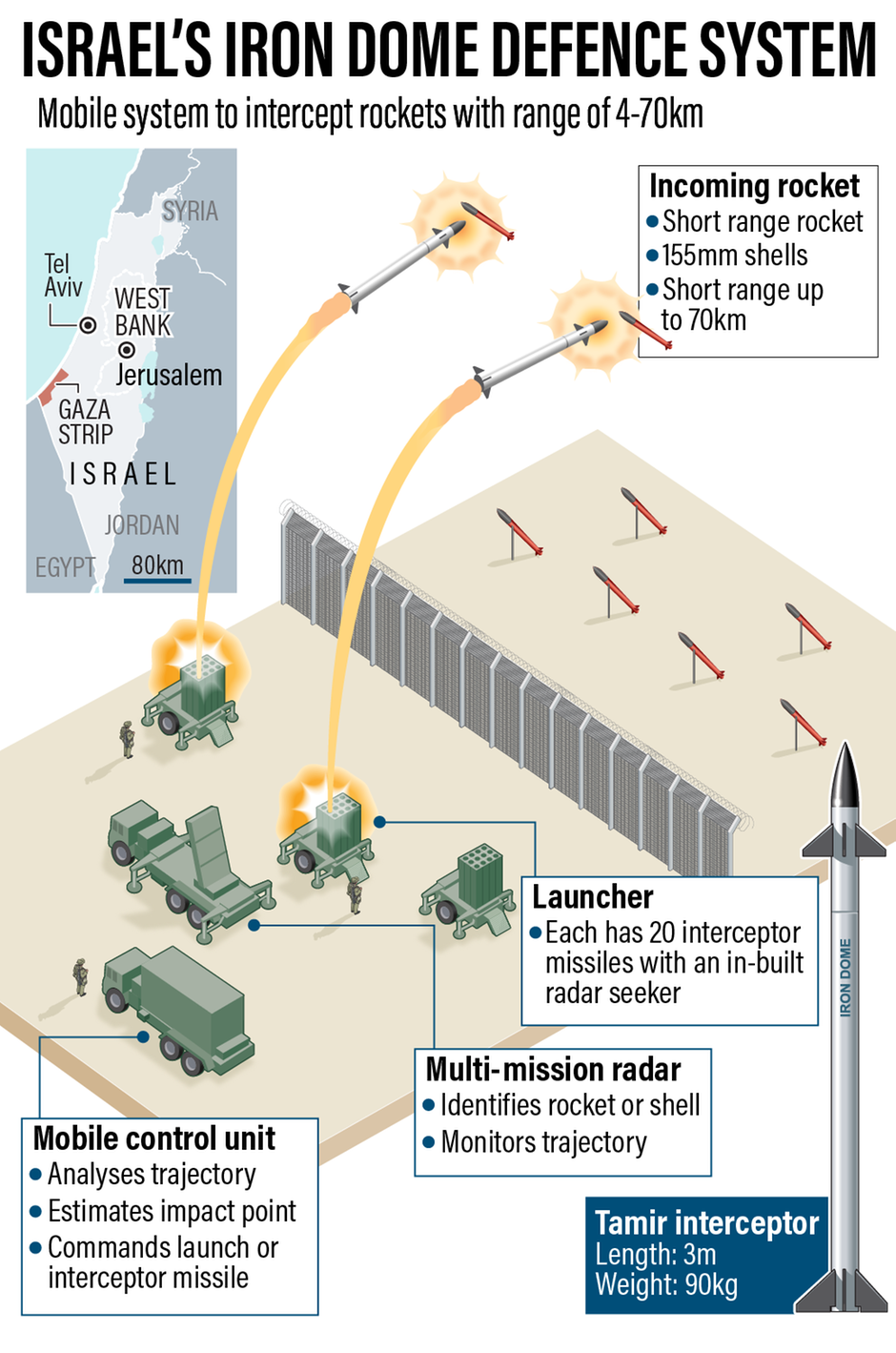Internal Security
Iron Dome Air Defence System: Israel
- 13 May 2021
- 4 min read
Why in News
Israel used its Iron Dome air defence system in recent violent clashes over Jerusalem.
Key Points
- About:
- It is a short-range, ground-to-air, air defence system that includes a radar and Tamir interceptor missiles that track and neutralise any rockets or missiles aimed at Israeli targets.
- It is used for countering rockets, artillery & mortars as well as aircraft, helicopters and Unmanned Aerial Vehicles (UAV).
- It is capable of being used in all weather conditions, including during the day and night.
- It was developed by the state-run Rafael Advanced Defense Systems and Israel Aerospace Industries and was deployed in 2011.
- Rafael claims a success rate of over 90%, with more than 2,000 interceptions, however experts agree the success rate is over 80%.
- It can protect deployed and manoeuvring forces, as well as the Forward Operating Base (FOB) and urban areas, against a wide range of indirect and aerial threats.
- Components:
- The Iron Dome has three main systems that work together to provide a shield over the area where it is deployed which are:
- Radar: It has a detection and tracking radar to spot any incoming threats.
- Weapon Control: It has a battle management and weapon control system (BMC),
- Missile Fire: It also has a missile firing unit. The BMC basically liaises between the radar and the interceptor missile.
- Indian Alternatives:
- S-400 TRIUMF:
- About:
- India has S-400 TRIUMF, which also caters to the three threats (rockets, missiles and cruise missiles). But they have much longer range.
- It has a much larger air defence bubble to knock off threats.
- It is a mobile, surface-to-air missile system (SAM) designed by Russia.
- Range & Effectiveness:
- The system can engage all types of aerial targets within the range of 400km, at an altitude of up to 30km.
- The system can track 100 airborne targets and engage six of them simultaneously.
- About:
- Prithvi Air Defence and Advance Air Defence:
- About:
- It is a double-tiered system consisting of two land and sea-based interceptor missiles, namely the Prithvi Air Defence (PAD) missile for high altitude interception, and the Advanced Air Defence (AAD) Missile for lower altitude interception.
- Range:
- It is able to intercept any incoming missile launched 5,000 kilometres away. The system also includes an overlapping network of early warning and tracking radars, as well as command and control posts.
- About:
- Ashwin Advanced Air Defence Interceptor Missile:
- About:
- It is also an indigenously produced Advanced Air Defence (AAD) interceptor missile developed by Defence Research and Development Organisation (DRDO).
- It is the advanced version of the low altitude supersonic ballistic interceptor missile.
- The missile also has its own mobile launcher, secure data link for interception, independent tracking and homing capabilities and sophisticated radars.
- Range:
- It uses an endo-spheric (within the Earth’s atmosphere) interceptor that knocks out ballistic missiles at a maximum altitude of 60,000 to 100,000 feet, and across a range between 90 and 125 miles.
- About:
- S-400 TRIUMF:







